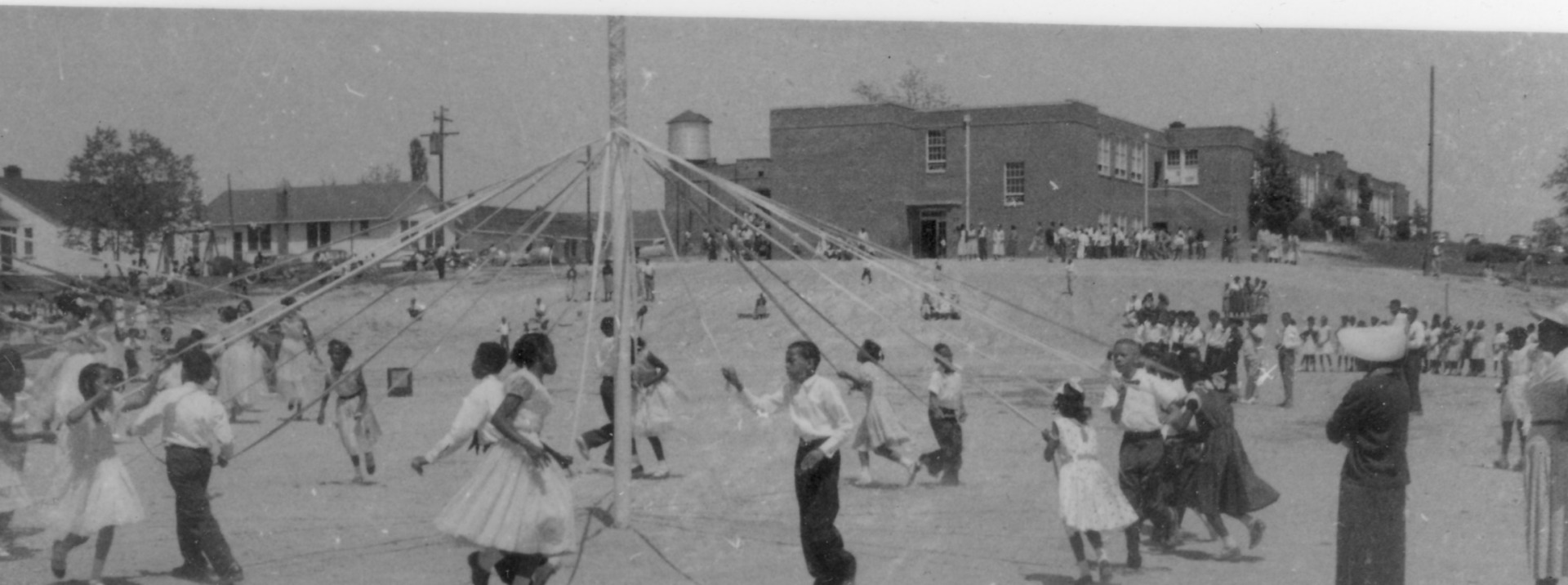
The History of Little River School
About the Exhibit
This exhibit explores the history of Little River School from its beginnings in 1934 until the school was desegregated in 1969. Little River School opened in 1935 as a consolidated Black school in segregated Durham County, North Carolina. As the first Black high school outside the city limits, it greatly expanded educational opportunities for rural students. The school's history began in the late 1920s, when Mr. C.B. Nixon recognized the need for secondary education for Black students in the northern part of Durham County and began rallying the community around the idea of creating a high school. The community organized and petitioned the county school board, who ultimately approved their petition and began construction of the school in 1934. Little River School offered a basic primary and secondary education with concentrations in Home Economics and Agriculture under the leadership of Mr. Nixon, who was appointed Principal.
Little River School mysteriously burned down early in the morning of April 10, 1939. Though it was widely believed that the fire was set deliberately, no one was ever held responsible. The school was rebuilt and expanded over the next year, including the addition of three classrooms and living quarters for a custodian to help avert future emergencies. The school grew over the years, eventually adding a lunch program, auditorium, band and chorus programs, athletics, 4H, debate, and other activities and clubs. Little River High School was accredited by the Southern Association of Colleges and Schools in 1957, followed by the Elementary department in 1961.
When Durham County desegregated public schools in the late 1960s, Little River was redesignated as an elementary school serving kindergarten through sixth grade. The school moved to a new location, and later expanded to serve students in kindergarten through eighth grade. The original school has been repurposed as a community and senior center, the Little River Community Complex. Many of the materials for this exhibit have been donated by alumni of Little River High School, who have also set up a history room in the community center to commemorate Little River School.
About the Exhibit
This exhibit explores the history of Little River School from its beginnings in 1934 until the school was desegregated in 1969. Little River School opened in 1935 as a consolidated Black school in segregated Durham County, North Carolina. As the first Black high school outside the city limits, it greatly expanded educational opportunities for rural students. The school's history began in the late 1920s, when Mr. C.B. Nixon recognized the need for secondary education for Black students in the northern part of Durham County and began rallying the community around the idea of creating a high school. The community organized and petitioned the county school board, who ultimately approved their petition and began construction of the school in 1934. Little River School offered a basic primary and secondary education with concentrations in Home Economics and Agriculture under the leadership of Mr. Nixon, who was appointed Principal.
Little River School mysteriously burned down early in the morning of April 10, 1939. Though it was widely believed that the fire was set deliberately, no one was ever held responsible. The school was rebuilt and expanded over the next year, including the addition of three classrooms and living quarters for a custodian to help avert future emergencies. The school grew over the years, eventually adding a lunch program, auditorium, band and chorus programs, athletics, 4H, debate, and other activities and clubs. Little River High School was accredited by the Southern Association of Colleges and Schools in 1957, followed by the Elementary department in 1961.
When Durham County desegregated public schools in the late 1960s, Little River was redesignated as an elementary school serving kindergarten through sixth grade. The school moved to a new location, and later expanded to serve students in kindergarten through eighth grade. The original school has been repurposed as a community and senior center, the Little River Community Complex. Many of the materials for this exhibit have been donated by alumni of Little River High School, who have also set up a history room in the community center to commemorate Little River School.
Statement on Content
The North Carolina Collection’s digital collections contain materials from a variety of time periods and sources. As a result, you may encounter phrases or images that are outdated, biased, or offensive. These materials are reflective of the era in which they were created and are presented here for the purposes of research, learning and transparency. They do not reflect the views or values of Durham County Library or the North Carolina Collection.
Statement on Content
The North Carolina Collection’s digital collections contain materials from a variety of time periods and sources. As a result, you may encounter phrases or images that are outdated, biased, or offensive. These materials are reflective of the era in which they were created and are presented here for the purposes of research, learning and transparency. They do not reflect the views or values of Durham County Library or the North Carolina Collection.
